Gil & Moti blog: From Rio with Love
During residency at Capacete – Rio de Janeiro, Brazil,March - August 2017
Mondriaan Fund International Artist in Residency Program Grant
Preservation of history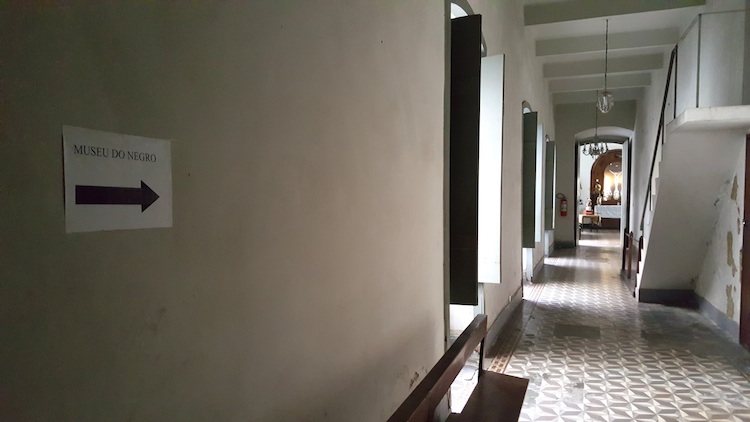 Out of curiosity we went to visit the The Black Museum that is dedicated to the preservation of black history (and slavery) in Rio. It is certainly not easy to find the venue that is located at the back of Our Lady of the Rosary and Saint Benedict Church in downtown Rio. When entering the church we were looking for the museum, the inconspicuous sign–"Black Museum, founded in 1969" is in fact at the opposite site of the actual entrance. After walking through the church assembly hall, the guard pointed out a sided corridor leading up the stairs to the annex and there is the entrance.
Out of curiosity we went to visit the The Black Museum that is dedicated to the preservation of black history (and slavery) in Rio. It is certainly not easy to find the venue that is located at the back of Our Lady of the Rosary and Saint Benedict Church in downtown Rio. When entering the church we were looking for the museum, the inconspicuous sign–"Black Museum, founded in 1969" is in fact at the opposite site of the actual entrance. After walking through the church assembly hall, the guard pointed out a sided corridor leading up the stairs to the annex and there is the entrance.
Saint Anastasia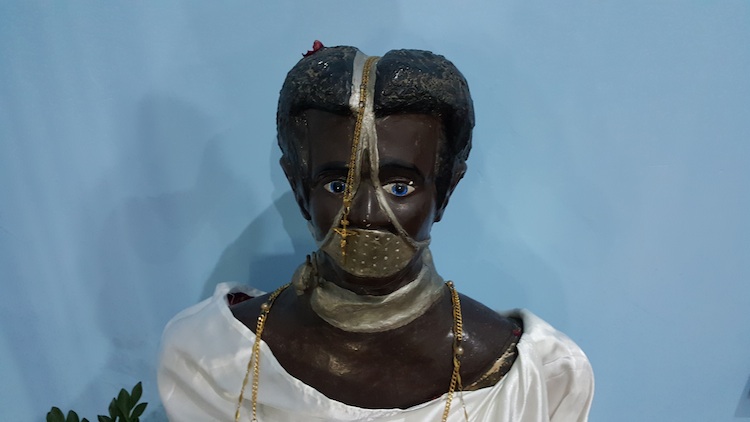 We read prior visiting that due to the devastating fire of 1967, most of the artifacts were destroyed. The museum today exhibits a very small collection of artworks, handicrafts and documents. Part of the collection is dedicated to Saint Anastasia; the Patron Saint of Slaves (that is still worshipped by a secret sect of Catholicism in Brazil today).
We read prior visiting that due to the devastating fire of 1967, most of the artifacts were destroyed. The museum today exhibits a very small collection of artworks, handicrafts and documents. Part of the collection is dedicated to Saint Anastasia; the Patron Saint of Slaves (that is still worshipped by a secret sect of Catholicism in Brazil today).
Tabac and Coffee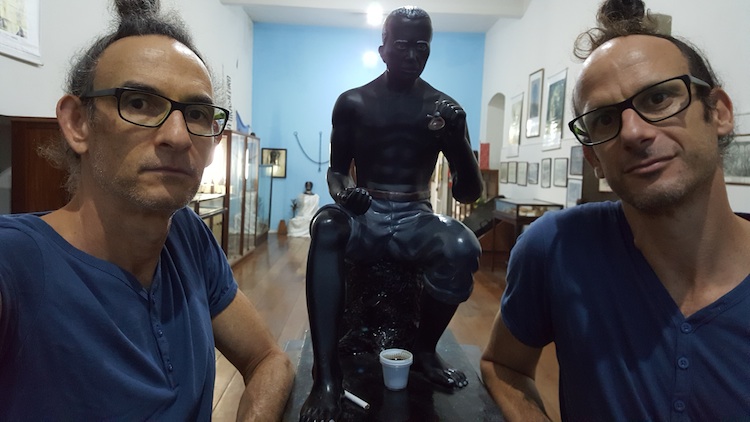 Unfortunately the eclectic presentation is not being well maintained. Someone even left disrespectfully a coffee cup and cigarette on one of the objects.
Unfortunately the eclectic presentation is not being well maintained. Someone even left disrespectfully a coffee cup and cigarette on one of the objects.
Painful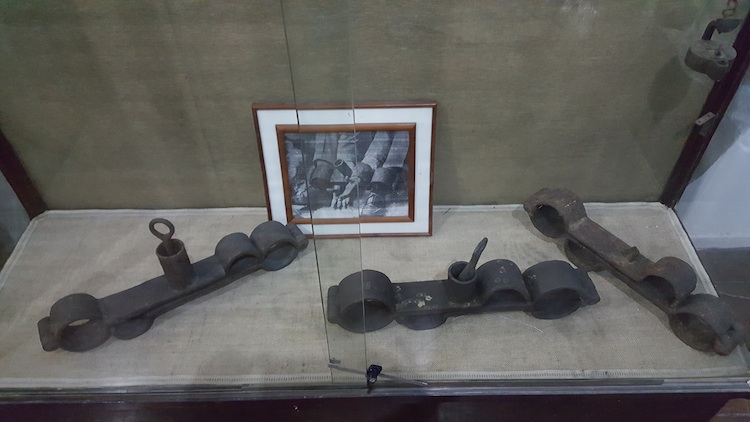 Some parts of the presentation are very strong, confrontational and painful to look at. They let seen what should not be forgotten; the dark history of black slavery.
Some parts of the presentation are very strong, confrontational and painful to look at. They let seen what should not be forgotten; the dark history of black slavery.
Black slaves market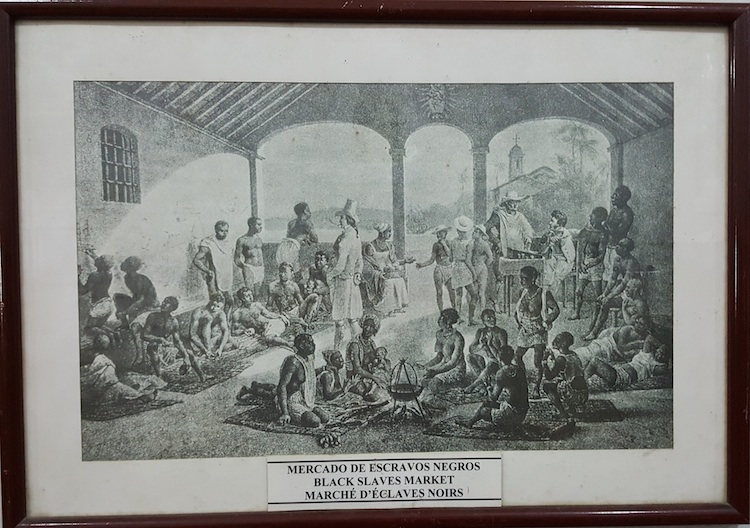 An antique illustration of the black slaves market: a daytime scene with a baron in the center of the composition surrounded by a black crowd he could possibly select from.
An antique illustration of the black slaves market: a daytime scene with a baron in the center of the composition surrounded by a black crowd he could possibly select from.
Golden Law 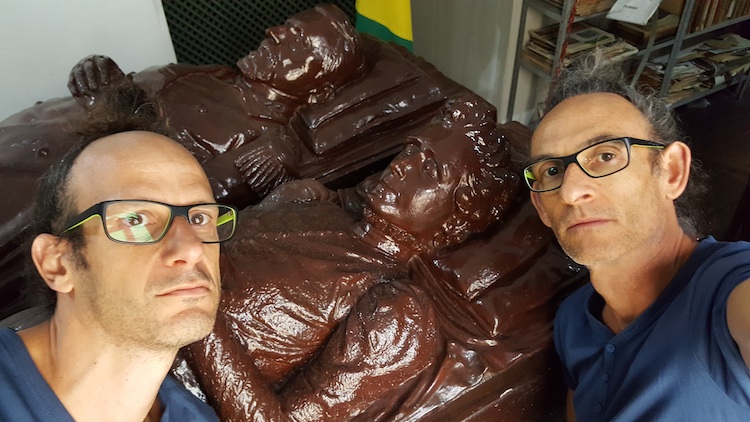 Brazil was the last country in the Western world to abolish slavery. By the time it was abolished, in 1888, an estimated four million slaves had been shipped from Africa to Brazil (40% of the total number of slaves brought to the Americas). On 13 May 1888, Isabel, Princess Imperial of Brazil signed the Golden Law (A Lei Áurea), as it was known, which enabled the complete cessation of slavery. Before this law, slaves were prohibited from owning assets or receiving an education; but after being freed, former slaves were left to make their own way in the world, homeless, without education, or political representation. Next generations of former slaves struggled to gain economic and social status in Brazilian society, and still are.
Brazil was the last country in the Western world to abolish slavery. By the time it was abolished, in 1888, an estimated four million slaves had been shipped from Africa to Brazil (40% of the total number of slaves brought to the Americas). On 13 May 1888, Isabel, Princess Imperial of Brazil signed the Golden Law (A Lei Áurea), as it was known, which enabled the complete cessation of slavery. Before this law, slaves were prohibited from owning assets or receiving an education; but after being freed, former slaves were left to make their own way in the world, homeless, without education, or political representation. Next generations of former slaves struggled to gain economic and social status in Brazilian society, and still are.
Pope Francis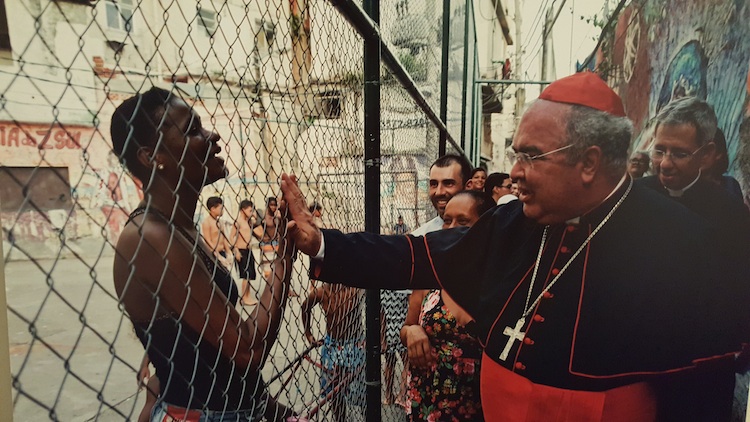 From the Black Museum we went to the National Museum of Fine Arts. An image from the exhibition of Brazilian photographer André Penteado, who documented the visit of Pope Francis in Rio (2013).
From the Black Museum we went to the National Museum of Fine Arts. An image from the exhibition of Brazilian photographer André Penteado, who documented the visit of Pope Francis in Rio (2013).
